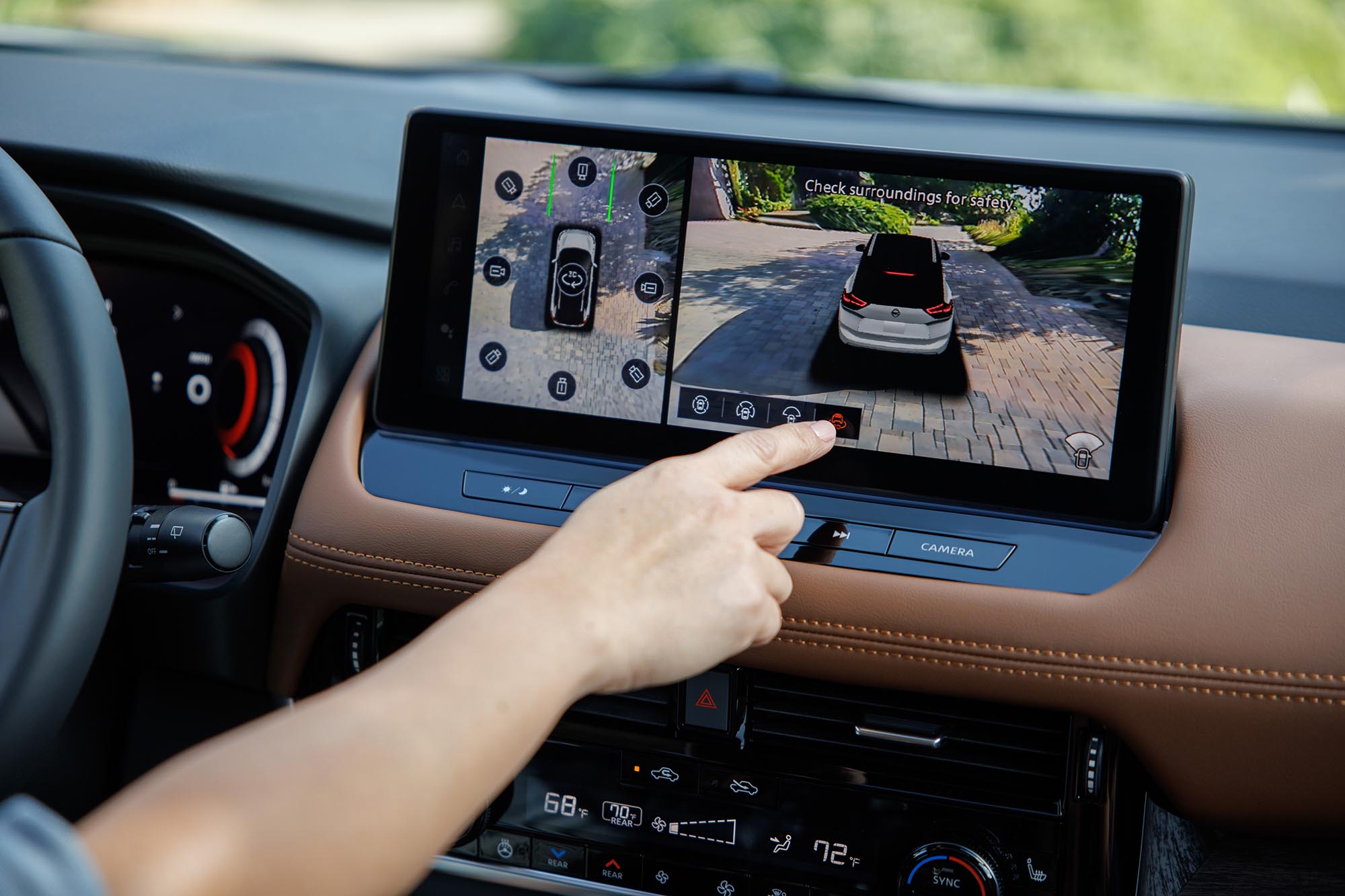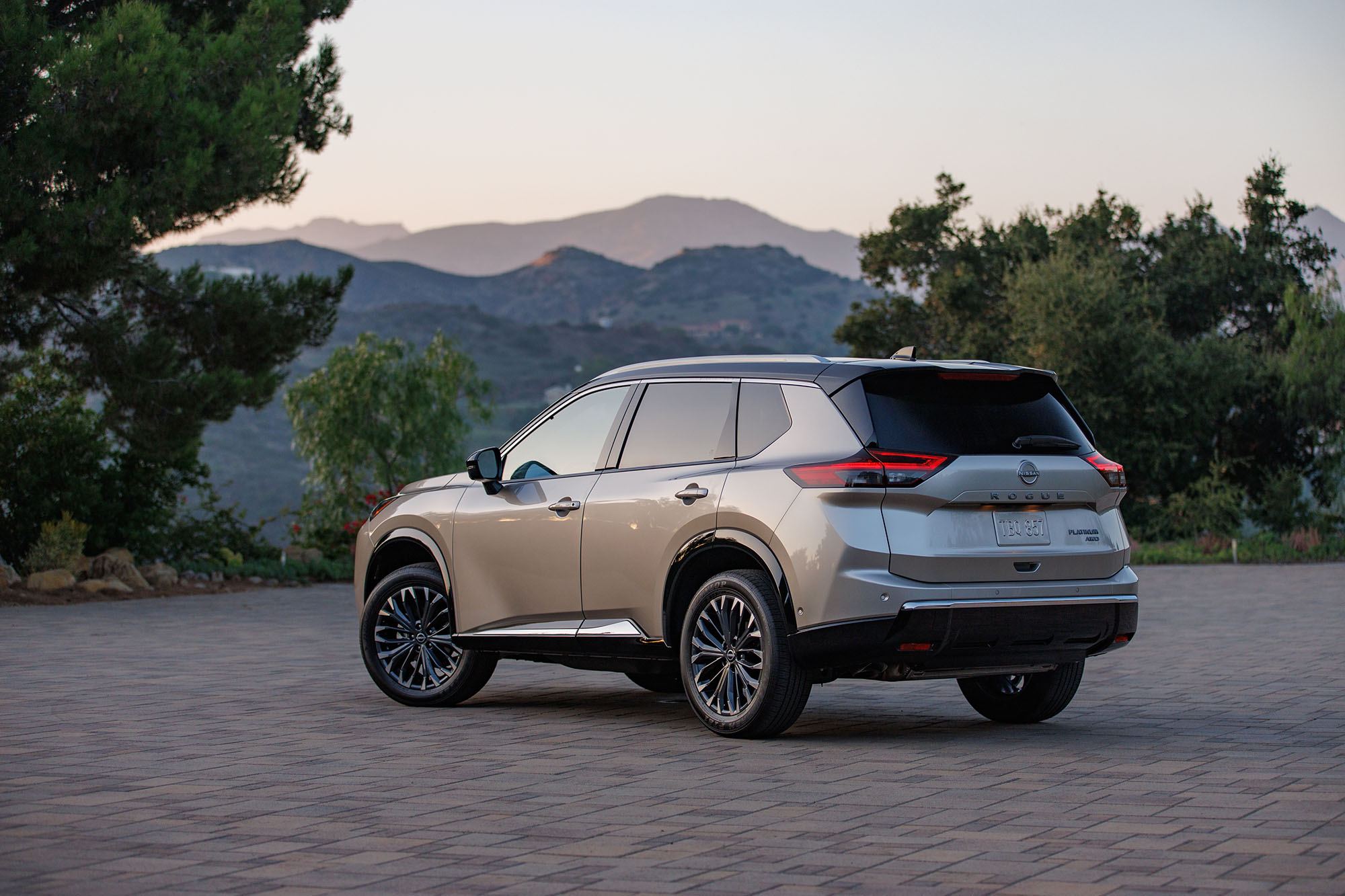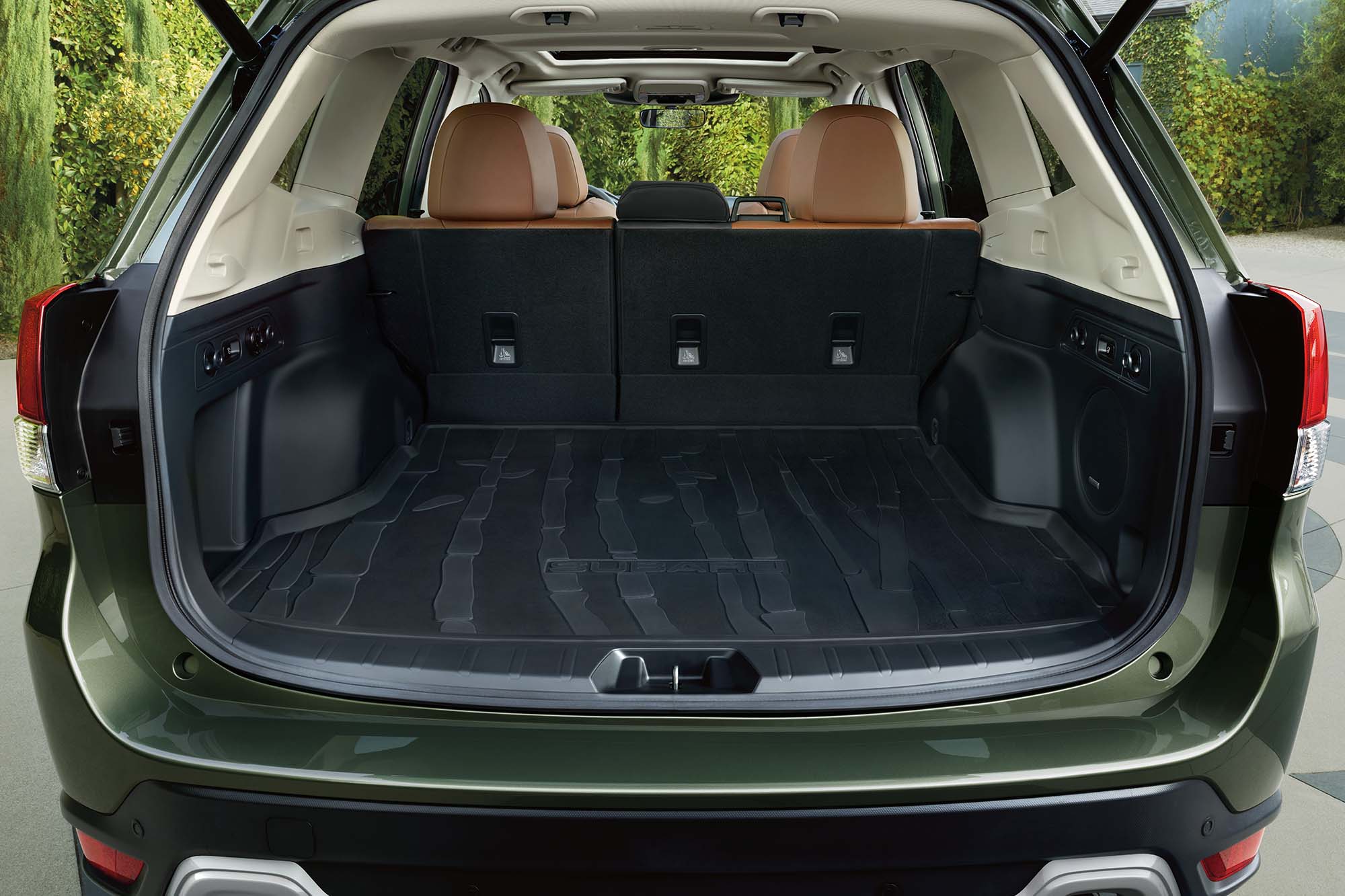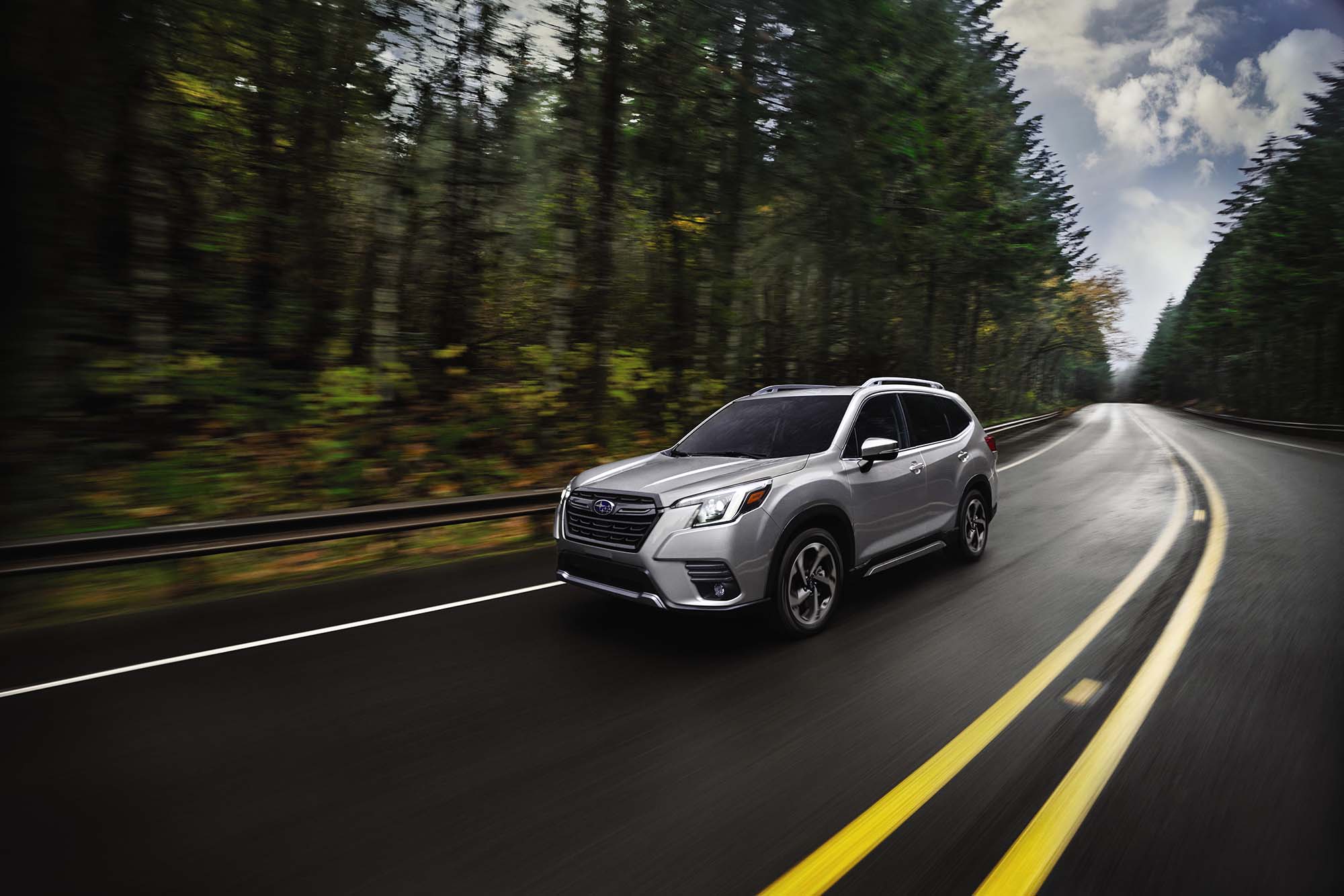Compared: 2024 Nissan Rogue vs. 2024 Subaru Forester
Highlights of these compact SUVs include thrifty fuel economy, impressive towing capacity, and standard all-wheel drive.
 Nissan | Subaru
Nissan | Subaru
If you're looking for a five-seat compact SUV, you might have the 2024 Nissan Rogue and the 2024 Subaru Forester on your list already. They're closely matched in size and price but differ in luxury upgrades on lower trims and the availability of all-wheel drive (AWD). Here's how they stack up in terms of price, features, and fuel economy.
 Subaru
Subaru
Nissan Piles on Luxury Features While Subaru Offers Variety and Standard AWD
The 2024 Rogue costs roughly $30,000 for a base trim S with front-wheel drive (FWD), Apple CarPlay and Android Auto connectivity, and SiriusXM satellite radio. The $32,000 SV adds dual-zone climate control, remote engine start, and Nissan's ProPilot Assist hands-free cruise control.
At about $37,000, the SL features front heated leather seats and a 12.3-inch digital dashboard. The top-spec Platinum, at a shade over $40,000, adds quilted leather upholstery, wireless Apple CarPlay, and a premium Bose stereo. Available AWD is a $1,500 add-on across the Rogue lineup.
 Nissan
Nissan
The 2024 Forester lineup begins with the $28,000 base trim, which includes standard AWD, Subaru's EyeSight driver-assistance features, and Apple CarPlay and Android Auto connectivity. A panoramic moonroof, heated front seats, and keyless ignition are added to the Premium for just under $32,000.
At just above $33,000, the Forester Sport gets orange accents inside and out, while the $35,000 Limited adds luxury features such as leather upholstery and a power liftgate.
For off-road enthusiasts, the Wilderness has an extra half inch (now 9.2 inches) of ground clearance, water-repellent upholstery, and dual-zone climate control for around $36,000. For less than $39,000, the loaded Touring features upgraded leather, a Harman Kardon stereo, a heated steering wheel and rear seats, and a 8.0-inch dashboard touchscreen.
 Nissan
Nissan
Subaru Has Slightly More Passenger Space and Greater Towing Capacity
The Rogue and the Forester offer nearly identical headroom for front and rear passengers. Still, the Subaru has almost 2 inches more legroom (43.3 inches) up front and nearly an extra inch (39.4 inches) in the back. The Rogue can hold more cargo, though, behind its rear seats.
The Nissan offers up to 74.1 cubic-feet with the rear seats down and 36.5 when they are in use. Except for the base Forester, which lacks a moonroof but offers 74.2 cu-ft with the seats up and 28.9 cu-ft with them down, the Subaru's cargo capacities are 26.9 cu-ft and 69.1 cu-ft with the back seats up and down.
 Subaru
Subaru
If you need to pull a trailer, consider the Forester Wilderness. It can tow up to 3,000 pounds thanks to its off-road upgrades. All other versions of the Subaru are limited to towing 1,500 pounds, which is the same amount as the Nissan.
 Subaru
Subaru
The Rogue Has More Power and Better Fuel Economy
Every Nissan Rogue trim uses a turbocharged 1.5-liter three-cylinder engine that makes 201 horsepower and is paired with a continuously variable automatic transmission (CVT). Most Rogue trims with FWD get an estimated 30/37/33 mpg in city/highway/combined driving, but the SL and Platinum are rated at 29/36/32 mpg. Adding AWD results in 28/35/31 mpg estimates, with the highway estimate dropping to 34 mpg for the SL and Platinum.
 Nissan
Nissan
The Subaru Forester lags a bit on power, with every model using a 182-hp 2.5-liter four-cylinder engine and a CVT. Most Forester trims are estimated to get 26/33/29 mpg, dropping to 25/28/26 mpg for the rugged Wilderness.
Written by humans.
Edited by humans.
 Bob Sorokanich
Bob SorokanichBob Sorokanich is a car-obsessed journalist and editor who manages to maintain an old Mini Cooper and a love affair with automobiles while living in New York City. When he's not thinking about cars, he's riding his motorcycle, and when he's not riding his motorcycle, he's anticipating his next joy ride.
Related articles
View more related articles